Theresienstadt is a tchecoslovaque film of genre Documentary directed by Kurt Gerron with Kurt Gerron
Theresienstadt (1944)
Theresienstadt. Ein Dokumentarfilm aus dem jüdischen Siedlungsgebiet
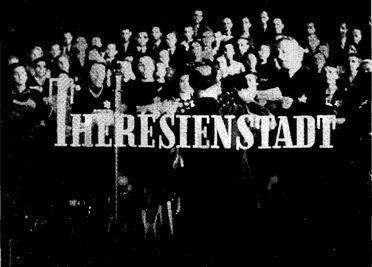
If you like this film, let us know!
Theresienstadt. Ein Dokumentarfilm aus dem jüdischen Siedlungsgebiet (English: Terezin: A Documentary Film from the Jewish Settlement Area) was a black-and-white projected Nazi propaganda film shot in the concentration camp of Theresienstadt.
In the summer of 1944, the Nazi government had perpetrated a hoax against the Danish Red Cross by taking them on a tour of the Theresienstadt concentration camp in the occupied Czech Republic. They "beautified" and cleaned the camp prior to arrival and arranged cultural activities to give the appearance of a happy, industrious community. To cover up the endemic overpopulation of the camp, numerous inmates were deported to Auschwitz before the arrival of the Red Cross delegation.
The gimmick was so successful that SS commander Hans Günther attempted to expand on it by having Kurt Gerron, a Jewish actor-director, make a short film about the camp to assure audiences that the inmates kept there were not being abused. In return, the Nazis promised that he would live. Shooting took 11 days, starting September 1, 1944.
Shortly after Gerron finished shooting the film, however, both he and other cast members were "evacuated" to Auschwitz, where they were gassed upon arrival.
The film was intended to be shown in neutral countries to counter Allied news reports about the persecution of Jews. Influential organisations such as the International Red Cross and the Vatican would be given screenings. However, the progress of the war in late 1944 to early 1945 made that impossible. After an initial screening in early April 1945 to senior members of the government and SS, there were a few other screenings to international humanitarian groups in Theresienstadt in April 1945. Further distribution was halted by the defeat of Germany.
The film was mostly destroyed, but about 20 minutes of sequences from it have survived. The surviving footage features a children's opera, Brundibar, and two musical performances on a wooden pavilion in the town square. One is of Karel Ančerl conducting a work by Pavel Haas, and the other is of the jazz band leader Martin Roman and his Ghetto Swingers. Ančerl and Roman both survived Auschwitz; most of their musicians and the children from the opera did not.
The "Beautification", the Red Cross tour, and the making of the film are dramatized extensively in the novel and mini-series War and Remembrance. Austerlitz, a novel by W.G. Sebald, features discussion of and a still from the film. It is also explored in documentary film The Given Town.
Synopsis
La trame du film a été reconstituée comme suit en 38 séquences par l'historien Karel Margry. La majeure partie en représente des activités récréatives et seulement douze des scènes de travail, l'ensemble produisant une impression de « fête continue » :Actors

Kurt Gerron
(Regisseur - Schauspieler)
Comments
Leave comment :
Suggestions of similar film to Theresienstadt
There are 8 films with the same actors, 9 films with the same director, 8965 with the same cinematographic genres, 7854 films with the same themes (including 1230 films with the same 2 themes than Theresienstadt), to have finally 70 suggestions of similar films.If you liked Theresienstadt, you will probably like those similar films :

Casino Jack (2010)
, 1h48Directed by George Hickenlooper
Origin Canada
Genres Drama, Thriller, Biography, Comedy, Comedy-drama, Documentary, Crime
Themes Politique, Political films
Actors Kevin Spacey, Barry Pepper, Rachelle Lefèvre, Kelly Preston, Jon Lovitz, Maury Chaykin
Rating61%





A hot shot Washington DC lobbyist and his protégé go down hard as their schemes to peddle influence lead to corruption and murder.
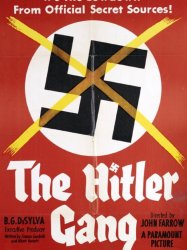
The Hitler Gang (1944)
, 1h41Directed by John Farrow
Origin USA
Genres Drama, War, Documentary, Historical
Themes Politique, Documentary films about war, Documentary films about historical events, Documentaire sur une personnalité, Hitler, Political films, Documentary films about World War II
Actors Roman Bohnen, Martin Kosleck, Victor Varconi, Luis van Rooten, Walter Abel, Ivan Triesault
Rating67%





In 1918 a young soldier called Adolf Hitler recovers from being gassed during World War I. At the behest of the German army, he joins German nationalistic parties, espousing theories that Germany lost the war because they were stabbed in the back. He rises to become dictator of Germany.

Last Days in Vietnam (2014)
, 1h38Directed by Rory Kennedy
Origin USA
Genres War, Documentary
Themes Politique, Documentary films about war, Documentary films about historical events, Political films
Rating75%





During the chaotic final weeks of the Vietnam War, the North Vietnamese Army closes in on Saigon as the panicked South Vietnamese people desperately attempt to escape. On the ground, American soldiers and diplomats confront the same moral quandary: whether to obey White House orders to evacuate U.S. citizens only—or to risk punishment and save the lives of as many South Vietnamese citizens as they can. The events recounted in the film mainly center on the US evacuation of Saigon codenamed Operation Frequent Wind.
 , 12h43
, 12h43Directed by Joris Ivens, Marceline Loridan-Ivens
Origin France
Genres Documentary
Themes Politique, Political films
Actors Joseph Losey
Rating78%





Comment Yukong déplaça les montagnes est composé de douze films réalisés dans différentes régions de Chine. Le film complet dure 12 heures, c'est un important témoignage historique sur la Chine pendant la Révolution Culturelle.
 , 1h27
, 1h27Directed by Bill Couturié
Origin USA
Genres War, Documentary
Themes Politique, Documentary films about war, Documentary films about historical events, Political films
Actors Tom Berenger, Ellen Burstyn, Sean Penn, J. Kenneth Campbell, Martin Sheen, Richard Chaves
Rating78%





Le documentaire est basé sur une lecture de lettre envoyées par de jeunes soldats américains à leur famille pendant la guerre du Viêt Nam, sur fond de documents d'archives. La lecture réalisée par de célèbres acteurs américains. Il présente la guerre du Viêt Nam selon le point de vue des jeunes soldats américains, de façon chronologique et ancrée dans l'histoire réelle.

The War at Home (1979)
, 1h40Directed by Barry Alexander Brown
Origin USA
Genres War, Documentary
Themes Politique, Documentary films about war, Documentary films about historical events, Political films
Rating75%





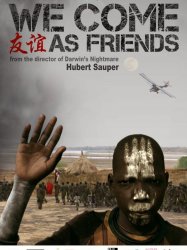
We Come as Friends (2014)
, 1h50Origin Austria
Genres Documentary
Themes Films set in Africa, Politique, Documentary films about politics, Political films
Actors George Clooney
Rating73%





The film focus on war-ravaged South Sudan fighting for independence from North Sudan and its President Omar al-Bashir.
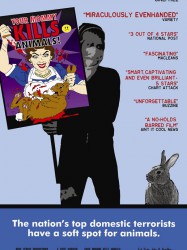
Your Mommy Kills Animals (2007)
, 1h45Origin USA
Genres Documentary
Themes Films about animals, Environmental films, Politique, Films about terrorism, Documentary films about animal rights, Documentaire animalier, Documentary films about law, Documentary films about environmental issues, Documentary films about war, Documentary films about historical events, Documentary films about politics, Documentary films about terrorism, Political films, Documentary films about nature
Rating65%





The film reports on controversies concerning and within the animal rights movement. These include external conflicts between animal rights advocates and medical researchers and restaurant operators, and internal disagreements within the animal rights movement between the animal shelter operators and the confrontationalists who demonstrate outside homes of corporate opponents. The film also discusses the comparison between animal liberation activists and political terrorists, including the FBI's ranking of animal-rights activists as the nation's No. 1 domestic terrorism threat.

Roger & Me (1989)
, 1h31Directed by Michael Moore
Origin USA
Genres Comedy, Documentary, Historical
Themes Politique, Transport films, Films about the labor movement, Films about automobiles, Documentary films about business, Documentary films about politics, Documentary films about technology, Documentaire sur le monde du travail, Political films, Road movies
Actors Michael Moore, Ronald Reagan, Guy Williams, Pat Boone
Rating74%





Michael Moore begins by introducing himself and his family through 8 mm archival home movies; he describes himself as the Irish American Catholic middle-class son of a General Motors employee assembling AC spark plugs. Moore chronicles how GM had previously defined his childhood in Flint, Michigan, and how the company was the primary economic and social hub of the town. He points out that Flint is the place where the Flint Sit-Down Strike occurred, resulting in the birth of the United Auto Workers. He reveals that his heroes were the Flint natives who had escaped the oppressive life in GM's factories, including "Flint's most famous native son," game show host Bob Eubanks.
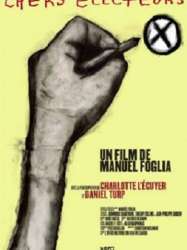
After the Ballot (2008)
Directed by Manuel Foglia
Origin Canada
Genres Documentary
Themes Politique, Documentary films about politics, Political films, Documentary films about Quebec politics
Chers électeurs documente le quotidien de deux députés du parlement québécois. Pendant près de quatre années, de 2003 à 2006, le réalisateur Manuel Foglia a suivi le député Daniel Turp, député péquiste de Mercier, et Charlotte L'Écuyer, députée libérale de Pontiac, qui ont tous deux été élus au pallier provincial pour la première fois en 2003. Turp ayant été député pour le Bloc québécois de 1997 à 2000 .
 Connection
Connection